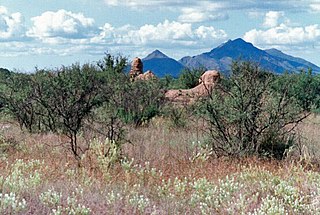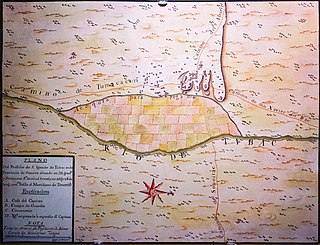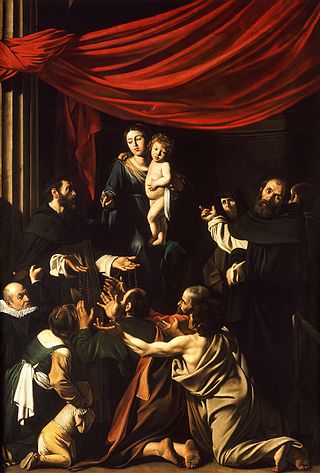Related Research Articles

Mission San Xavier del Bac is a historic Spanish Catholic mission located about 10 miles (16 km) south of downtown Tucson, Arizona, on the Tohono O'odham Nation San Xavier Indian Reservation. The mission was founded in 1692 by Padre Eusebio Kino in the center of a centuries-old settlement of the Sobaipuri O'odham, a branch of the Akimel or River O'odham located along the banks of the Santa Cruz River. The mission was named for Francis Xavier, a Christian missionary and co-founder of the Society of Jesus in Europe. The original church was built to the north of the present Franciscan church. This northern church or churches served the mission until it was razed during an Apache raid in 1770.

Sonora, officially Estado Libre y Soberano de Sonora, is one of the 31 states which, along with Mexico City, comprise the Federal Entities of Mexico. The state is divided into 72 municipalities; the capital city of which being Hermosillo, located in the center of the state. Other large cities include Ciudad Obregón, Nogales, San Luis Río Colorado, and Navojoa.

The Pimería Alta was an area of the 18th century Sonora y Sinaloa Province in the Viceroyalty of New Spain, that encompassed parts of what are today southern Arizona in the United States and northern Sonora in Mexico.
Pedro Fages (1734–1794) was a Spanish soldier, explorer, first Lieutenant Governor of the province of the Californias under Gaspar de Portolá. Fages claimed the governorship after Portolá's departure, acting as governor in opposition to the official governor Felipe de Barri, and later served officially as fifth (1782–91) Governor of the Californias.
The Opata are an Indigenous people in Mexico. Opata territory, the "Opatería" in Spanish, encompasses the mountainous northeast and central part of the state of Sonora, extending to near the border with the United States. Historically, they included several subtribes, including the Eudeve, Teguima, and Jova peoples.

The Spanish missions in the Sonoran Desert are a series of Jesuit Catholic religious outposts established by the Spanish Catholic Jesuits and other orders for religious conversions of the Pima and Tohono O'odham indigenous peoples residing in the Sonoran Desert. An added goal was giving Spain a colonial presence in their frontier territory of the Sonora y Sinaloa Province in the Viceroyalty of New Spain, and relocating by Indian Reductions settlements and encomiendas for agricultural, ranching, and mining labor.

Joaquín de Montserrat, 1st Marquess of Cruillas was Spanish viceroy of New Spain, from October 6, 1760 to August 24, 1766.

Carlos Francisco de Croix, 1st Marquess of Croix, was a Spanish general and viceroy of New Spain, from August 25, 1766, to September 22, 1771, a period of considerable turbulence.

Teodoro de Croix was a Spanish soldier and colonial official in New Spain and Peru. From April 6, 1784 to March 25, 1790 he was viceroy of Peru.

La Misión de San Gabriel de Guevavi was founded by Jesuit missionary priests Eusebio Kino and Juan María de Salvatierra in 1691. Subsequent missionaries called it San Rafael and San Miguel, resulting in the common historical name of Mission Los Santos Ángeles de Guevavi.
The Free Company of Volunteers of Catalonia was a military company of the Spanish Army serving in the Spanish colonial empire.
Pedro de Alberní y Teixidor; Tortosa, January 30, 1747 – Monterrey, New Spain, March 11, 1802) was a Spanish soldier who served the Spanish Crown for almost all his life. He spent most of his military career in colonial Mexico. He is notable for his role in the exploration of the Pacific Northwest in the 1790s, and his later term as ninth Spanish governor of Alta California in 1800.
Cucurpe is the municipal seat of Cucurpe Municipality in the Mexican state of Sonora.

The Pima Revolt, also known as the O'odham Uprising or the Pima Outbreak, was a revolt of Pima native Americans in 1751 against colonial forces in Spanish Arizona and one of the major northern frontier conflicts in early New Spain.

Presidio San Agustín del Tucsón was a presidio located within Tucson, Arizona, United States. The original fortress was built by Spanish soldiers during the 18th century and was the founding structure of what became the city of Tucson. After the American arrival in 1846, the original walls were dismantled, with the last section torn down in 1918. A reconstruction of the northeast corner of the fort was completed in 2007 following an archaeological excavation that located the fort's northeast tower.
La Pintada is an archaeological site located some 60 kilometers south of the city of Hermosillo, Sonora, Mexico, within the "La Pintada" canyon, part of the "Sierra Libre", a small mountain massif of the coastal plains that extends throughout the Sonoran Desert.

This article details the history of Sonora. The Free and Sovereign State of Sonora is one of 31 states that, with the Federal District, comprise the 32 Federal Entities of Mexico. It is divided into 72 municipalities; the capital city is Hermosillo. Sonora is located in Northwest Mexico, bordered by the states of Chihuahua to the east, Baja California to the northwest and Sinaloa to the south. To the north, it shares the U.S.–Mexico border with the states of Arizona and New Mexico, and on the west has a significant share of the coastline of the Gulf of California.
Alexandro Rapicani was a Jesuit missionary to New Spain.
Francisco Antonio Barbastro (1735–1800) was a Franciscan missionary in New Spain.
Francisco Xavier Villarroya (1734–1768) was a Jesuit missionary to New Spain.
References
- ↑ EL CORONEL DOMINGO DE ELIZONDO (1710-1783) Archived March 4, 2016, at the Wayback Machine
- 1 2 Elizondo, Domingo (1999). Noticia de la expedición contra los rebeldes seris y pimas de Sonora, 1767-1771. Instituto de Investigaciones Históricas. Universidad Nacional Autónoma de México. ISBN 968-36-7444-5.
- ↑ Stagg, Albert L. (1 June 1976). The First Bishop of Sonora: Antonio de los Reyes, O.F.M. University of Arizona Press. p. 8. ISBN 978-0-8165-0549-4.